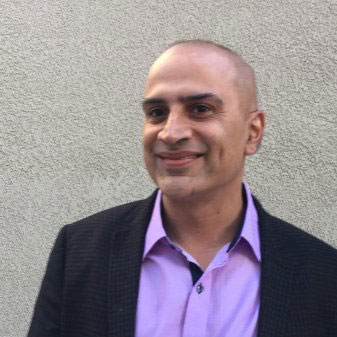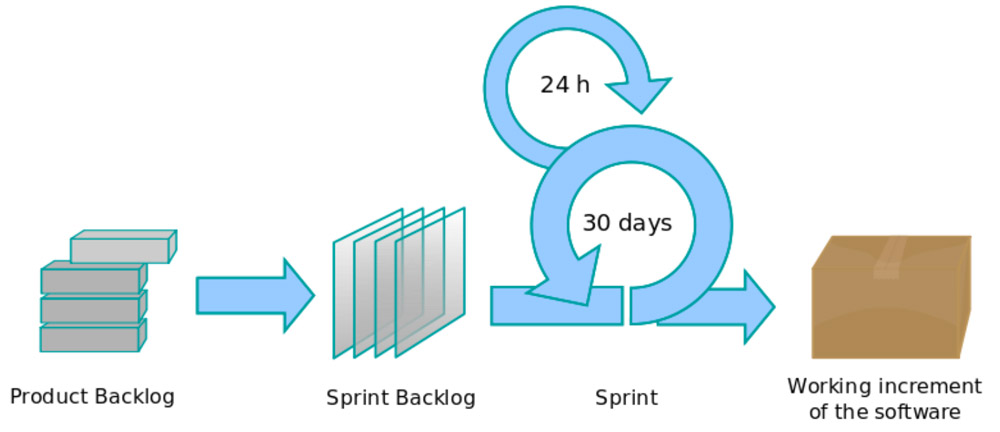Agile Methodology in Large Enterprises
Wednesday, December 28, 2016

|
Hamesh Chawla |
Agile methodology is the climbing framework for large-scale enterprises. How can you transition your large company into an agile framework? Below are simple and effective techniques for scaling agile methodology to your specific project, team and enterprise.
Continuous Delivery is a software development strategy that provides high-quality, accessible software to customers. The process of releasing minimum viable product (MVP) is important for earning early feedback and tracking usage patterns for testing hypotheses. MVP will save wasted engineering time and preserve features like gold plating among large software teams.
An agile product backlog is the set of tasks to complete before a code is released. Product managers should maintain one group backlog for all teams. One backlog will allow for high priority tasks to receive attention while providing access to all contributors at all times. This will prevent miscommunication and provide a collaborative project environment.
“Three Amigos” meetings will enhance agile teamwork. These meetings involve a product owner, a developer and a tester that review requirements and test feature requests on a backlog. The product owner expresses the business need, the programmer explains implementation and the tester considers potential problems. This encourages different viewpoints while providing group consensus on project status.

The three major frameworks used in large enterprises are the Scaled Agile Framework (SAFe), the Disciplined Agile Delivery (DAD), and the Large Scale Scrum (LeSS). With guided, multi-level training and certifications, they are ideal for small, expanding practices. Scrum of Scrums (SoS) is another popular approach due to informal training. (See Richard Dolman and Steve Spearman's comparative matrix for different agile scaling approaches.) One disadvantage is that these frameworks can lead to rethinking of hierarchical organization, which is challenging for larger enterprises.
The three agile frameworks are based on ideas originating in scrum testing. The SAFe framework has 5-9 people and uses Team, Program and Portfolio levels with two-week scrum processes in XP (Extreme Programming) methods. At the Program level, each team’s scrum has 5-10 SAFe teams as part of an “Agile Release Train”. The Portfolio level defines how executives and agile leaders can use processes like value streams to prioritize features.

This SAFe “Big Picture” graphic shows the three levels of SAFe and the roles involved in SAFe. Image Source: Scaled Agile Framework
Disciplined Agile Delivery by Scott Ambler and Mark Lines, is built on existing agile techniques and uses Inception, Construction and Transition phases. DAD helps in areas of architecture and design in the Inception phase and is ideal for deployment in the Transition phase. Large-scale Scrum (LeSS) by Craig Larman and Bas Vodde, consists of Framework-1 and Framework-2. Framework-1 is for smaller companies (10 Scrum teams, 7 members each), while Framework-2 is for larger. LeSS puts several feature teams on a single Product Owner (PO), expanding on the basic Scrum framework. LeSS is more flexible, non-proscriptive and most effective in smaller projects.
The Scaled Agile Academy trains on Team, Program and Portfolio phases of SAFe with certifications for managers, executives, developers, testers, and consultants. For DAD, the Disciplined Agile Consortium trains for Disciplined Agilist, Certified Disciplined Agilist and Certified Disciplined Agile Coach. To learn more about LeSS, there is training for Certified LeSS Practitioner and Certified LeSS for Executives. Programs like Certified ScrumMaster or Professional ScrumMaster, help students to review basic Scrum knowledge.
This content is made possible by a guest author, or sponsor; it is not written by and does not necessarily reflect the views of App Developer Magazine's editorial staff.
Start with a MVP
Continuous Delivery is a software development strategy that provides high-quality, accessible software to customers. The process of releasing minimum viable product (MVP) is important for earning early feedback and tracking usage patterns for testing hypotheses. MVP will save wasted engineering time and preserve features like gold plating among large software teams.
Create a Single Product Backlog
An agile product backlog is the set of tasks to complete before a code is released. Product managers should maintain one group backlog for all teams. One backlog will allow for high priority tasks to receive attention while providing access to all contributors at all times. This will prevent miscommunication and provide a collaborative project environment.
Building a Collaborative Culture
“Three Amigos” meetings will enhance agile teamwork. These meetings involve a product owner, a developer and a tester that review requirements and test feature requests on a backlog. The product owner expresses the business need, the programmer explains implementation and the tester considers potential problems. This encourages different viewpoints while providing group consensus on project status.
Large-scale Agile Frameworks

All three scaled agile frameworks build upon techniques used in scrum
and agile, team-oriented frameworks. Image Source: Lakeworks
and agile, team-oriented frameworks. Image Source: Lakeworks
The three major frameworks used in large enterprises are the Scaled Agile Framework (SAFe), the Disciplined Agile Delivery (DAD), and the Large Scale Scrum (LeSS). With guided, multi-level training and certifications, they are ideal for small, expanding practices. Scrum of Scrums (SoS) is another popular approach due to informal training. (See Richard Dolman and Steve Spearman's comparative matrix for different agile scaling approaches.) One disadvantage is that these frameworks can lead to rethinking of hierarchical organization, which is challenging for larger enterprises.
The Scrum Process
The three agile frameworks are based on ideas originating in scrum testing. The SAFe framework has 5-9 people and uses Team, Program and Portfolio levels with two-week scrum processes in XP (Extreme Programming) methods. At the Program level, each team’s scrum has 5-10 SAFe teams as part of an “Agile Release Train”. The Portfolio level defines how executives and agile leaders can use processes like value streams to prioritize features.

This SAFe “Big Picture” graphic shows the three levels of SAFe and the roles involved in SAFe. Image Source: Scaled Agile Framework
Disciplined Agile Delivery by Scott Ambler and Mark Lines, is built on existing agile techniques and uses Inception, Construction and Transition phases. DAD helps in areas of architecture and design in the Inception phase and is ideal for deployment in the Transition phase. Large-scale Scrum (LeSS) by Craig Larman and Bas Vodde, consists of Framework-1 and Framework-2. Framework-1 is for smaller companies (10 Scrum teams, 7 members each), while Framework-2 is for larger. LeSS puts several feature teams on a single Product Owner (PO), expanding on the basic Scrum framework. LeSS is more flexible, non-proscriptive and most effective in smaller projects.
Training Courses and Certifications
The Scaled Agile Academy trains on Team, Program and Portfolio phases of SAFe with certifications for managers, executives, developers, testers, and consultants. For DAD, the Disciplined Agile Consortium trains for Disciplined Agilist, Certified Disciplined Agilist and Certified Disciplined Agile Coach. To learn more about LeSS, there is training for Certified LeSS Practitioner and Certified LeSS for Executives. Programs like Certified ScrumMaster or Professional ScrumMaster, help students to review basic Scrum knowledge.
This content is made possible by a guest author, or sponsor; it is not written by and does not necessarily reflect the views of App Developer Magazine's editorial staff.

Become a subscriber of App Developer Magazine for just $5.99 a month and take advantage of all these perks.
MEMBERS GET ACCESS TO
- - Exclusive content from leaders in the industry
- - Q&A articles from industry leaders
- - Tips and tricks from the most successful developers weekly
- - Monthly issues, including all 90+ back-issues since 2012
- - Event discounts and early-bird signups
- - Gain insight from top achievers in the app store
- - Learn what tools to use, what SDK's to use, and more
Subscribe here




_cptybzmh.jpg)








